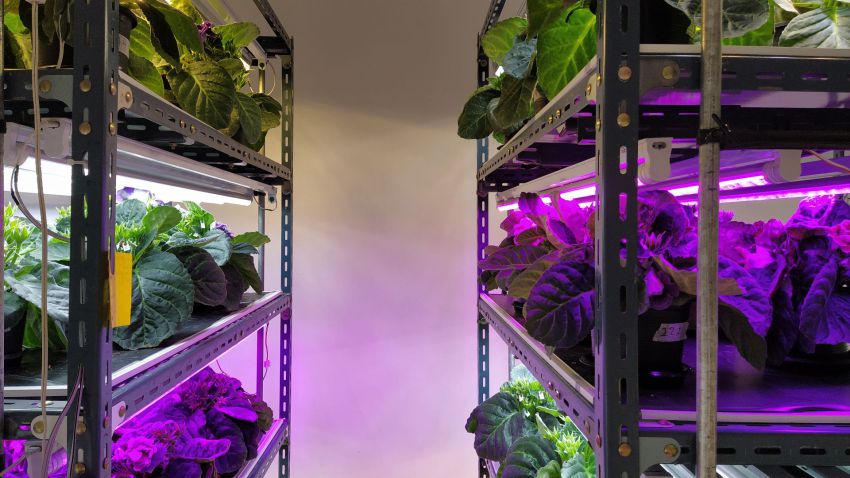- Rent, Lease, or Purchase
- |
April 23, 2018
Sustainable Farming Using a Container Greenhouse

The world continues to move towards sustainability, and farming is no different. A container greenhouse lets you grow herbs, leafy greens, and microgreens and manage them with a more compact footprint. It’s also a smart way to grow produce over extended seasons with low risks and higher yield.
Container greenhouses don't require much space, either. You can use the roof, interiors, and walls to preserve space. They also provide farmers with a steady income, all year round.
What is a Shipping Container Greenhouse?
Upcycled or refurbished shipping containers with an open-top are great for building small-scale sustainable gardens. You can use these units to create commercial-scale farms. You can utilize the rooftop and walls of a 20 or 40-foot unit to grow food and install systems needed to supply water, nutrients, and electricity.
Why Use Containers for Greenhouses?
Sustainable Design
Urban areas have limited space and water. Shipping container greenhouses provide a sustainable solution with minimal utilization of resources. You can set up a container farm easily in areas including parking lots.
Efficient Farming
Drip irrigation and hydroponics cut down water usage by nearly 90% compared to conventional farming. In addition, container greenhouses have regulated conditions that promote year-round growth.
Cost-Effective
Farming land doesn't come cheap, and there are plenty of shipping containers that farmers can convert into greenhouses for an affordable price. You can also place containers close to the market to reduce transportation costs. This gives farmers the ability to supply fresh produce over different seasons.
Easy to Maintain
Once the initial setup and modifications of containerized farms are complete, maintenance is relatively straightforward as the unit keeps the plants in a safe, enclosed area.
Controlled Environment Agriculture
Controlled Environment Agriculture (CEA) is a term for many forms of indoor food cultivation using technology for adequate growth. It lets you produce food anywhere, be it a skyscraper, a warehouse, or even in the desert.
The technology typically controls factors critical to plant growth such as temperature (air, nutrient solution, root-zone), humidity, carbon dioxide, light, nutrient concentration, and pH level.
Types of CEA
- Hydroponics - This method facilitates soil-less cultivation of plants by providing them an adequate quantity of nutrients in a controlled environment for the best possible health and fast growth. There are various hydroponic systems such as NFT (Nutrient Film Technique), drip irrigation, flood & drain, wick, and water culture.
- Aeroponics - Aeroponics uses up to 90% less water than many sustainable hydroponic methods by letting the plant’s roots hang and absorb a nutrient-rich mist, along with sunlight and supplemental light as needed. This method prevents the plant from getting water-logged and delivers more oxygen.
- Aquaponics - The aquaponics system uses a combination of hydroponics and aquaculture (raising fish). It utilizes the nutrients from fish waste, such as urea and ammonium, to feed the crops. Aquaponics also uses LED lights to mimic the hue and intensity of natural sunlight for the fishes.
Shipping containers provide an ideal environment to utilize these techniques in conjunction with vertical farming methods that use greenhouse walls to cultivate crops.
Benefits
- Organic produce - CEA uses organic manure such as that produced from fish waste to feed directly to the roots of the plants. Inside cargo containers, they stay safe from pests and insects and don't need harmful pesticides and insecticides.
- High Efficiency - You can use technologies such as drip irrigation and hydroponics to supply water and nutrients directly to the crops. This saves up to 90% water as compared to conventional farming.
- Independent of weather changes - Achieve a controlled environment with hydroponics to grow crops through the year without worrying about the weather.
No GMOs necessary - CEA systems help provide a consistent high-nutrient solution for better yields. This renders genetically modified organisms (GMOs) unnecessary
What Kind of Plants Should You Grow?
Winters are typically too cold and dark to grow anything. But container greenhouses allow you to grow a wide variety of plants, all year round:
- Flowers such as delphinium, lisianthus, and snapdragons
- Veggies such as lettuce, eggplant, tomato, pepper, and cucumber
- Herbs such as basil, rosemary, and thyme
You can also grow strawberries, another high-value product, in hanging containers to keep the floor free for other produce.
Note: It is expensive to grow warm-weather crops in the winter. Only pursue this option if you have a market and prices that deliver good returns on the investment.
Aim to grow veggies, flowers, herbs, and other popular products that will bring in a lot of sales. With greenhouse units, you have the year-round potential for your crops.
Prefabricated Greenhouses vs. Shipping Container Farms
Prefabricated greenhouses structures come with tent poles, zippers, and transparent plastic sheets with geodesic domes and triangular tessellations. They are ideal if you want to set up a hobby garden but not suitable for commercial production.
- They use standard soil farm practices with limited yield.
- Basic temperature control facilities such as fans and vents to let fresh air in.
- The size of a greenhouse varies between 100 and 400 sq. ft.
Unlike prefab greenhouses, container farms are well-suited for large-scale production:
- They rely on artificial light and are largely independent of changes in sunlight.
- You can use advanced CEA techniques for temperature control to produce higher yields.
- Commercial containerized farms are of the size of a standard Conex box which is 320 sq. ft. You can also stack the units to save space.
How to Set Up Shipping Container Greenhouses
You may want to divide the project into two steps: acquiring and setting up the greenhouse unit and running it on a day-to-day basis. You can purchase a new, single-use, or refurbished unit, depending on your budget.
For day-to-day operations, the basic systems that you will need are:
- Growing systems - chambers, trays, racks, and shelves
- Irrigation solutions - pump, nutrient bins, reservoir, valves, and piping
- Light systems - LED lights, wiring, and switches
- Atmosphere control - air-conditioner, heather, and ventilation systems
- Control and monitoring solutions - humidity, temperature, alkalinity, and light sensors and alarms
If you want to set up a greenhouse in cities, find out about the permits required in your area. The best place to get all the information is your local municipal office.
There are two types of costs associated with the greenhouse — the capital cost of buying and setting up the unit and the operational costs of running it successfully. Operational costs will include seeds, water, packaging, advertising, energy expenses, and labor. Spending a bit more upfront on better insulation may save you from long-term operational costs.
How Much Does it Cost?
The initial capital cost (CAPEX) is the cost of acquiring the container and associated equipment. You can use a new, single-use, or refurbished shipping container, depending on your budget. A brand-new unit would be expensive but are easy to find.
Costs of typical bare-bones units change with the size:
- 20-foot unit - $2,350 to $7,900
- 40-foot unit - $3,400 to $8,600
The final cost includes the modifications performed to set up the greenhouse or farm ecosystem. Extras may include the vertical garden, solar panels, rooftop greenhouse, fish tanks, LED lights, water circulation systems, and more. You can use a combination of 10 ft, 20 ft, and 40 ft units to achieve your ideal greenhouse design.
While container farms give less margin for error than conventional farms, market and economic factors still affect them. The choice of crops, location, prices, and advertising methods all impact the amount of money you spend and the revenue you collect.
Frequently Asked Questions
What factors can you control in CEA?
Farming practices in CEA carefully regulate the following parameters for optimal plant growth:
- Temperature - Optimal temperature enhances plant health
- Humidity - Adequate humidity can lead to more production and save the unit from corrosion
- Carbon Dioxide (CO2) - CO2 is essential to control the photosynthesis process
- Light - Light is essential for photosynthesis. You can use LED lights with varying intensity, spectrum, and duration. Advanced options include computer-controlled lights
- Nutrients - You can deliver essentials either via the soil or using hydroponics
How do you protect plants in a shipping container greenhouse from extreme atmospheric temperatures?
There are various ways to regulate the temperature inside a container to protect crops and enable optimal plant growth.
- High summer temperatures - You can ventilate using electric fans. Use one fan to suck in the cool air and another to blow the hot air out, and connect these fans to a temperature regulation device.
- Low winter temperatures - You can use a 5-cm-layer of Styrofoam on the non-glazed walls and ceiling of the container. In case the temperature drops well below freezing, you may need electric heaters.
Related Blogs



Subscribe to Our Blog
Enter your email address to subscribe to the blog and receive the notification of new posts by email.
Thank You for Subscribing to Our Blog!
Stay tuned for upcoming emails with valuable content that we hope will enhance your experience with our brand.
Both Pardot and mg360 form submissions failed.
